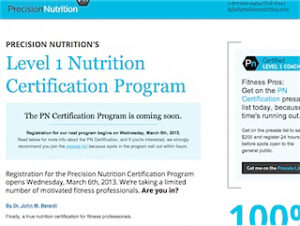
This article is the second part of the rest series, a collaboration with Blaine Moore at Run to Win.
When you’re lifting weights, how long do you rest between sets? Chances are it’s time based – 30sec, 2 minutes etc. In this article I’ll look at the use of your pulserate to determine when to begin the next set.
I first came across this concept in the article Bulgarian Leg Training Secrets [1]. In it, Angel Spassov and Terry Todd write :
The Bulgarian team uses the pulse rate as a gauge to let them know how far to take the sets. They believe that each of the moderate to heavy sets should produce a pulse rate of 162-180 beats per minute. The lifter doesn’t begin his next set until his pulse has dropped to between 102 and 108. The Bulgarian team does virtually this same workout five or six days a week, along with quite a lot of other leg work that goes with the snatch and the clean and jerk.
Now, before you race off and start measuring your pulse during sets of heavy step-ups (if you don’t do them, they’re well worth considering), there are a couple of things to keep in mind. The first of these is your resting pulserate.
Measuring your pulse rate
Keep in mind that this is your resting pulserate, so there’s no point taking it right after an activity or when you’re stressed out at work. The usual time to take it is first thing in the morning.
There are a couple of ways to take it. The manual option is to place two fingers over one of the pulse points (this video [.mov, .07mb] shows where they are) and count how many beats there are during a one minute period. Typical figures are shown below.
The second method is to use a device such as a pulse monitor watch, which essentially does the same thing (you pay for the convenience and consistency). Either way, write down the resting pulserate – preferably every day. This should gradually come down as your fitness improves – eventually it will level off, but that could take a while.

Typical resting pulse rates
Note that these are typical values for the population at large – these rates will vary according to your personal fitness and certain medical conditions.
Babies to age 1: 100-160 bpm
Children ages 1 to 10: 60-140 bpm
Children age 10+ and adults: 60-100 bpm
Well-conditioned athletes: 40-60 bpm
Factors affecting pulse rate
If your resting pulse is well outside these ranges, the cause could be one or more of the following :
Activity: try to measure your pulse before you even get out of bed in the morning. Once you’ve had time to wake up fully, jump out of bed, get stressed about work etc it’s too late. Keep a watch beside your bed.
Fever: one of the reasons for measuring your pulse every day is that it is often an early sign of illness. If your body is trying to fight something off, your pulse will probably be elevated.
Hyperthyroidism: an overactive thyroid gland can push up a pulse rate.
Anemia: anemia is a lack of oxygen in the blood. This can be caused by a number of things (iron deficiency and vitamin B12 deficiency are the most common), and will typically be associated with a higher pulse.

Stimulants: caffeine is perhaps the most common – so avoid that cup of coffee before checking your pulse. Other stimulants include cigarettes, amphetimines, decongestants, diet pills and asthma medications.
Heart disease: This may be direct (such as Tachycardia or Bradycardia), or indirect (such as the many forms of ischaemic heart disease). Whatever the case, see a doctor before embarking on any sort of fitness quest.
The second consideration is your active pulse rate. Once you’ve measured your resting pulse for a week or two you’ll have an idea of how fit you are when you’re not doing anything, and you’ll know when you start to come down with a cold. Now you need to find out just how much your pulse changes with a bit of strength training.
HR(Max)
This is the maximum heart rate your body will sustain in its present condition. Although most closely associated with age, the HR(Max) will vary between same-aged individuals with differing fitness profiles.
An estimate of HR(Max) often used by gym-goers and trainers alike is :
HR(Max) = 220 – age of the individual
This is by no means a detailed assessment of fitness, but it will give you an idea.
Other research by Miller et al (1993) [2] and Londeree and Moeschberger (1982) [3] proposes alternatives to this formula. An estimate combining all three approaches may be found on the Sports Coach site [4].
Target Heart Rate (THR)
The Target Heart Rate (sometimes known as Training Heart Rate) is not a single value but a range signifying the pulserates most beneficial to the heart and lungs during exercise. This value will vary according to the fitness and goals of the individual, and is commonly divided into five Training Zones :
- Healthy Heart Zone (Warm up) : 50 – 60% of HR(Max). This is the easiest level and ideal for those just beginning their fitness quest.
- Fitness Zone (Fat Burning) : 60 – 70% of HR(Max). Slightly more intense than the Healthy Heart Zone.
- Aerobic Zone (Endurance Training) : 70 – 80% of HR(Max). Improves cardiovasular and respiratory systems in addition to strengthening the heart. This is the preferred zone for those training for an endurance event.
- Anaerobic Zone (Performance Training) : 80 – 90% of HR(Max). Benefits of this zone include an improved VO2(Max) (the greatest amount of oxygen that can be consumed during exercise), a higher lactate tolerance and a greater ability to fight fatigue.
- Red Line (Maximum Effort) : 90 – 100% of HR(Max). A very intense level, and only suitable for short bursts by those who are already in very good shape.
Those involved in strength training will be looking at the Anaerobic Zone.
Calculating THR
Now that you know your estimated Maximum Heart Rate and your desired Training Zone, it’s time to calculate your Target Heart Rate. This will give you a range to work with in your strength training sessions.
There are three basic ways to calculate the THR. The simplest method is :
THR = HR(Max) x % Intensity
eg: someone with a maximum heartrate of 180bpm looking to train in the Anaerobic Zone will have a Target Heart Rate of 180 x ~85% = 153bpm.
Karvonen Method
The Karvonen Method is more accurate, factoring in Resting Heart Rate (RHR):
THR = ((HR(Max) – HR(Rest)) × %Intensity) + HR(Rest)
eg: the same individual as above has a resting heartrate (HR(Rest)) of 70bmp. Strength training should elevate the heartrate to (180-70x.85) + 70 = 163bpm
NB: Kerry Neilson from the University of Colorado has a simple online calculator using this method.
Zoladz Method
An alternative to the Karvonen Method is the Zoladz Method, which derives exercise zones by subtracting values from HRmax.
THR = HR(Max) – Adjuster +/- 5 bpm
Zone 1 Adjuster = 50 bpm
Zone 2 Adjuster = 40 bpm
Zone 3 Adjuster = 30 bpm
Zone 4 Adjuster = 20 bpm
Zone 5 Adjuster = 10 bpm
NB: Zone 1 = easiest, Zone 5 = most difficult.
eg: using the same individual again, THR = 180 – 20+/-5 = 155-165bpm.

Rest breaks
This brings us back to the length of rest breaks between sets. Just prior to exercise, measure your pulse. This will give you an idea of your active – though not greatly exerted – level. Each strength training set will elevate your heartrate to around your Target Heart Rate, and the intervening rest breaks should be long enough to allow your heartrate to slow to somewhere between this active rate and about 120 bpm.
How long will this take? Obviously it will vary from person to person, but it’s likely to be closer to 30 seconds than 5 minutes (for workouts in the Anaerobic Zone). A good indicator is the number of sets and reps you do using this technique – it should be about the same as before; if it isn’t, either the rest breaks were too long before or they’re too short now.
Time to do a little fine-tuning.
Glossary
bpm: beats per minute
Bradycardia: a resting heartrate lower than 60 beats per minute
ischaemic heart disease: heart disease characterised by a reduced blood flow to the heart
Tachycardia: a resting heartrate greater than 100 beats per minute
References
1. Bulgarian Leg Training Secrets
Angel Spassov, Ph.D., D.Sc. and Terry Todd, Ph.D
2. Miller et al (1993) – ‘Predicting max HR’ – Medicine & Science in Sports & Exercise, 25(9), 1077-1081
3. Londeree and Moeschberger (1982) ‘Effect of age and other factors on HR max’ – Research Quarterly for Exercise & Sport, 53(4), 297-304
4. Maximum Heart Rate
Brian MacKenzie
Sports Coach
Sources
Blaine Moore
Track your resting heartrate
Run to Win
The Franklin Institue
Vital Signs
WebMD
Pulse Measurement
Wikipedia
Bradycardia
Wrong Diagnosis
Types of Heart Disease











0 Comments
Trackbacks/Pingbacks